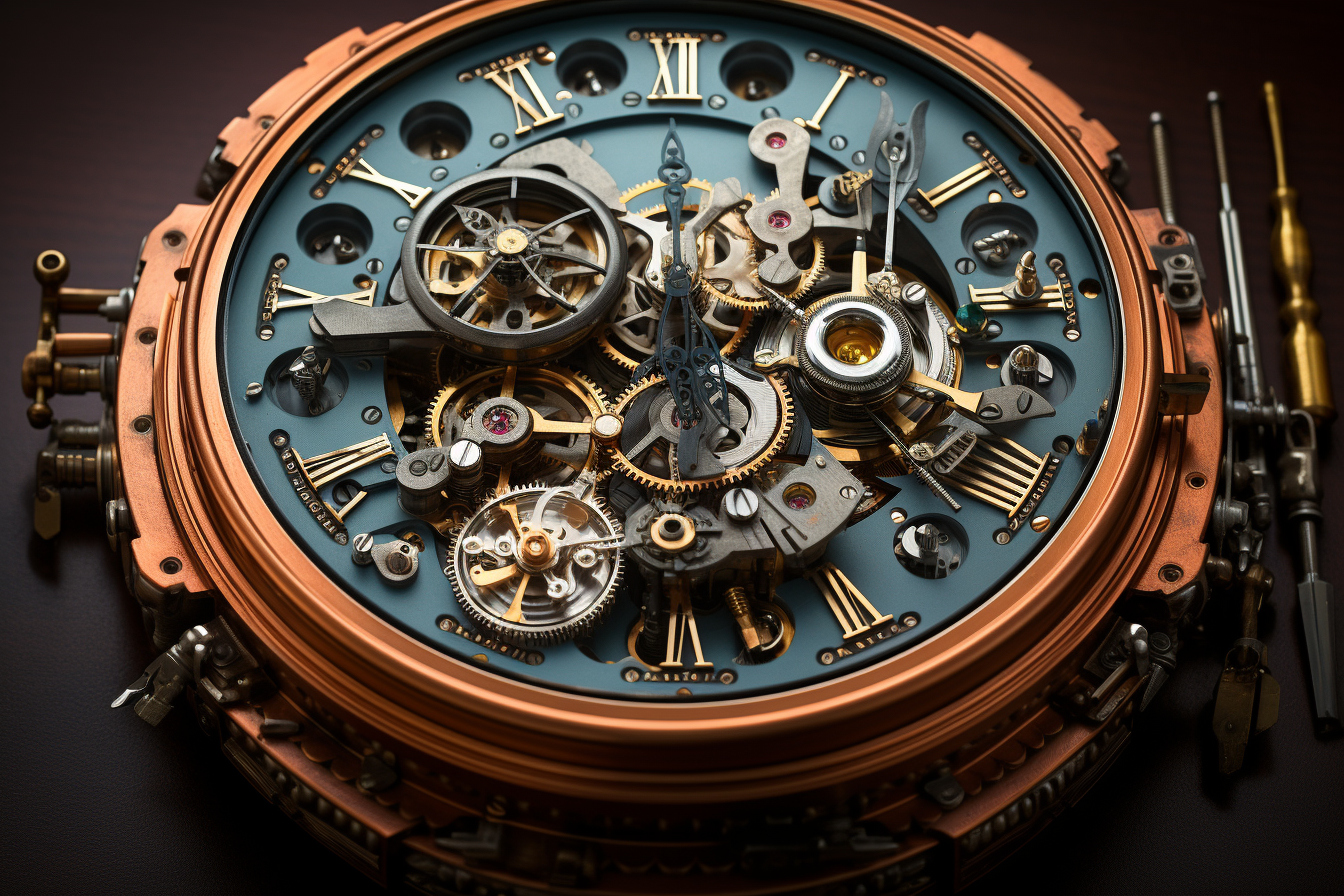The melodious ticking of an ancient clock is a melody that transcends time. For watch enthusiasts, restoring an antique piece is a noble quest, which requires expertise and delicacy. Each movement, each cog conceals a part of history. Let’s see together how to bring these guardians of time back to life through specialized watch restoration techniques.
Careful Diagnosis: The Crucial First Step
Before delving into the workings of an antique clock, it is essential to carry out a complete diagnosis. This involves a thorough visual examination, looking for signs of wear, metal degradation, or missing parts. Precision in the documentation of each component will make it possible to constitute a coherent and structured restoration plan.
Delicate Cleaning: The Act of Purification
Cleaning is a critical phase in the restoration of a clock. The use of suitable solvents and specific tools, such as fine brushes and pipe cleaners, is essential to remove accumulated dust and congealed oil residue without damaging delicate parts. We avoid abrasive products, preferring gentle methods that respect period materials.
Meticulous Rust Removal: A Battle Against Time
Metal components, often subject to rust, require careful treatment for their revival. Techniques such as gentle electrolysis help eliminate corrosion without compromising the integrity of the parts. In some cases, a light application of rust-inhibiting oil is beneficial to protect and lubricate components for years to come.
Precise Restoration of the Mechanical Movement: The Soul of the Clock
The heart of an antique clock is its mechanical movement, where control and precision are essential. High-precision tools help adjust or make custom parts if necessary. Lubrication of each friction point is carried out with special oils that do not harden over time, ensuring smooth and long-lasting operation.
Polishing and Aesthetic Renovation: Restore Radiance and Splendor
Aesthetic renovation is as much an art as a technique. Polishing metal components, treating noble woods with suitable varnishes, and restoring decorative elements require an expert hand and an artistic eye. This process aims to revive the original beauty of the clock while preserving its historical character.
Rigorous Assembly: Harmony Rediscovered
Assembly is the final act where each piece finds its place with the greatest attention. Fine adjustments ensure that each cog engages precisely, each balance swings smoothly, and the entire mechanism works in perfect harmony, as it was originally intended.
Post-Restoration Maintenance Tips: Sustaining the Heritage
Once restored, an antique clock requires regular maintenance to maintain its splendor and precision. Experts recommend performing an annual check, avoiding direct exposure to sunlight, maintaining a stable environment without extremes in temperature or humidity, and handling the object with care to avoid shocks that could desynchronize the delicate mechanism.
Restoring an antique clock is much more than just a refurbishment process; it is an act of preservation of a functional work of art that links the past to the present. Rebuilding the mechanisms, polishing and brushing the surfaces, adjusting and oiling, each step is of capital importance and requires specific know-how.
In short, a restored old clock is not just a decorative object or a measuring instrument; it is a living heritage, a witness to human genius through the ages. For collectors and watch enthusiasts, each tick is a timeless whisper, a breath of life in the eternal continuum of time.












